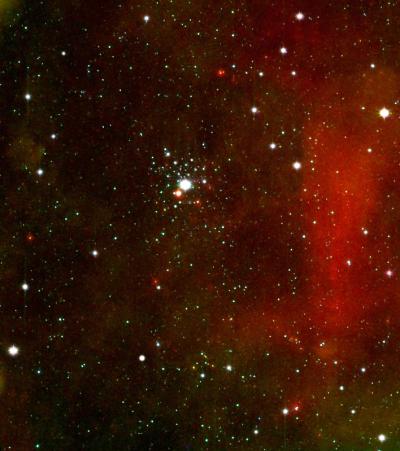Only a few stars less massive than the Sun retain their protoplanetary disks. These disks provide the raw material for forming gas giants like Jupiter. Therefore, gas giants have to form in less than 5 million years or they probably won't form at all.
So baby Jupiter had to gain weight quickly.

Photograph from NASA's Spitzer Space Telescope shows the young star cluster NGC 2362. By studying it, astronomers found that gas giant planet formation happens very rapidly and efficiently, within less than 5 million years, meaning that Jupiter-like worlds experience a growth spurt in their infancy. Credit: NASA/JPL-Caltech/T. Currie (CfA)
"Even though astronomers have detected hundreds of Jupiter-mass planets around other stars, our results suggest that such planets must form extremely fast. Whatever process is responsible for forming Jupiters has to be incredibly efficient," said lead researcher Thayne Currie of the Harvard-Smithsonian Center for Astrophysics. Currie presented the team's findings at a meeting of the American Astronomical Society in Long Beach, Calif.
Even though nearly all gas giant-forming disks in NGC 2362 have disappeared, several stars in the cluster have "debris disks," which indicates that smaller rocky or icy bodies such as Earth, Mars, or Pluto may still be forming.
"The Earth got going sooner, but Jupiter finished first, thanks to a big growth spurt," explained co-author Scott Kenyon.
Kenyon added that while Earth took about 20 to 30 million years to reach its final mass, Jupiter was fully grown in only 2 to 3 million years.
Previous studies indicated that protoplanetary disks disappear within 10 million years. The new findings put even tighter constraints on the time available to create gas giant planets around stars of various masses.
NASA's Jet Propulsion Laboratory, Pasadena, Calif., manages the Spitzer mission for NASA's Science Mission Directorate, Washington. Science operations are conducted at the Spitzer Science Center at the California Institute of Technology, also in Pasadena. Caltech manages JPL for NASA.





Comments